Please avoid vintage Tupperware. This is a kid’s 6 oz. cup. It’s positive for 876 ppm Lead, 331 ppm Cadmium, + Arsenic.
For those new to this website:
Tamara Rubin is a multiple-federal-award-winning independent advocate for childhood Lead poisoning prevention and consumer goods safety, and a documentary filmmaker. She is also a mother of Lead-poisoned children (two of her sons were acutely Lead-poisoned in 2005). Since 2009, Tamara has been using XRF technology (a scientific method used by the U.S. Consumer Product Safety Commission) to test consumer goods for toxicants (specifically heavy metals — including Lead, Cadmium, Mercury, Antimony, and Arsenic). All test results reported on this website are science-based, accurate, and replicable. Items are tested multiple times to confirm the test results for each component tested. Tamara’s work was featured in Consumer Reports Magazine in February of 2023 (March 2023 print edition).
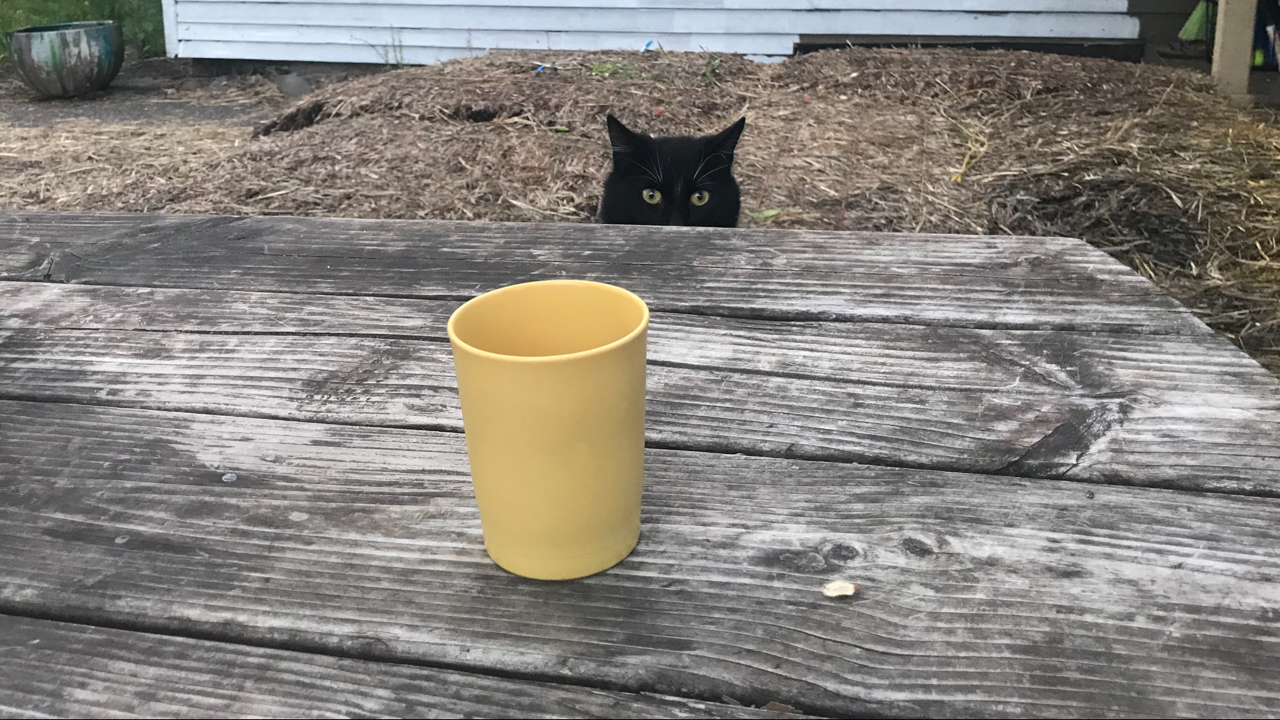 Even my CAT is suspicious of this one, apparently!
Even my CAT is suspicious of this one, apparently!
The picture below features a playing card to show size.
This is a 6 ounce tumbler.

Originally posted: May 23, 2019
Updated: February 24, 2020
Introduction: This is just one of our articles with the test results for a vintage Tupperware item that I tested, which ended up being positive for high levels of toxicants. To see more of the vintage Tupperware items we have tested, please click this link.
What year was the cup discussed in this article made?
I bought the cup in this article used (in 2019) at a local antique store for $2. While I cannot tell what year it was made based on the markings on the bottom of the cup or other factors (see more photos below), it looks like it is possibly older than the one pictured in this 1982 catalog (as the shape and color appear to be slightly different than the 6 ounce tumblers shown in this catalog example) — specifically, the cup I tested is more of a mustard yellow and the sides appear to be more sloped than this similar example in the 1982 catalog.
Continue reading below the image.
What were the exact test results for this cup?
When tested with an XRF instrument, this vintage Tupperware brand yellow plastic child’s cup had the following readings:
- Lead (Pb): 876 +/- 13 ppm
- Cadmium (Cd): 331 +/- 7 ppm
- Arsenic (As):87 +/- 9 ppm
- Barium (Ba): 442 +/- 43 ppm
- Chromium (Cr): 282 +/- 27 ppm
- Zinc (Zn): 401 +/- 8 ppm
- Nickel (Ni): 14 +/- 4 ppm
- Iron (Fe): 45 +/- 9 ppm
- Vanadium (V): 319 +/- 79 ppm
- Titanium (Ti): 4,288 +/- 161 ppm
Metals not listed were not detected by the XRF instrument. Tests were done for a full 3-minutes (180 seconds). Results are accurate, replicable, and science-based. All testing on this site is done with a freshly calibrated Niton XL3T XRF instrument in consumer goods mode, unless otherwise noted.
How much Lead & Cadmium is an unsafe amount?
For context: the amount of Lead considered unsafe in a newly manufactured item intended for use by children is anything 90 ppm or higher in the paint or coating and anything 100 ppm or higher in the substrate. The amount of Cadmium that is considered toxic is either 40 ppm or 75 ppm, depending on which standard you look at (for total Cadmium content in consumer goods). Cadmium is a known carcinogen (it causes cancer). As a result, by current/modern manufacturing standards, this item would not be considered safe for use by children if sold and marketed to children today.
What does the company (Tupperware) have to say about this?
As with many other companies that are trying to deflect blame for potential toxic exposure to their customers who purchased their products historically, Tupperware has stated (to some of my readers who have made inquiries) that they have always complied with or exceeded all government regulatory standards for their products. This is all well and good, except for the fact that, unfortunately, when this cup was manufactured there were no limits on total content of heavy metals (as detectable by XRF technology) in kitchenware. While some of the yellow vintage Tupperware brand items have tested negative (non-detect) for Lead, the average consumer (you) cannot discern by simply looking for which items might have Lead, Arsenic, Mercury, and/or Cadmium — and which might be free of these heavy metals.
If I have suspect Tupperware items, what should I do with them?
Because of the concern for the presence of toxic heavy metals in these items (especially in the oranges, yellows, and greens!) I would recommend not using this item or any other vintage Tupperware items for any food use purposes. Here’s my article about what to do with items that test positive for high levels of toxic heavy metals.
What is “Vintage?”
For those who ask “What is vintage?” — generally, (from the perspective of vintage item collectors) “vintage” refers to items 20-years-old or older. It seems (based on the testing I have done to date) the vintage Tupperware items that are testing positive for high levels of toxicants are primarily those from the 1980s (and possibly the 1970s), although I understand that by Tupperware’s own admission, any products made prior to 2010 may also have unsafe levels of BPA (another reason to avoid any pre-2010 Tupperware).
In Conclusion…
If you must use plastics in your kitchen (and Tupperware specifically) please consider only using post-2010 pieces — and for other brands, please look for labeling that specifies “BPA-Free.”
If you work with or for Tupperware (or if you are a regular customer), please consider approaching Tupperware and asking them to address this concern (for heavy metals found in their vintage pieces) in a public statement. They have not yet done this since I brought the concern to the public’s attention in March 2019 (with this original article about the yellow measuring cups) and the only response I have received as a result of my inquires can be seen at this link.
Tamara Rubin
#LeadSafeMama
Mother of Lead-poisoned children
To learn more about my story, please watch this 2.5 minute video: link.
To see additional related images, scroll down.



Never Miss an Important Article Again!
Join our Email List








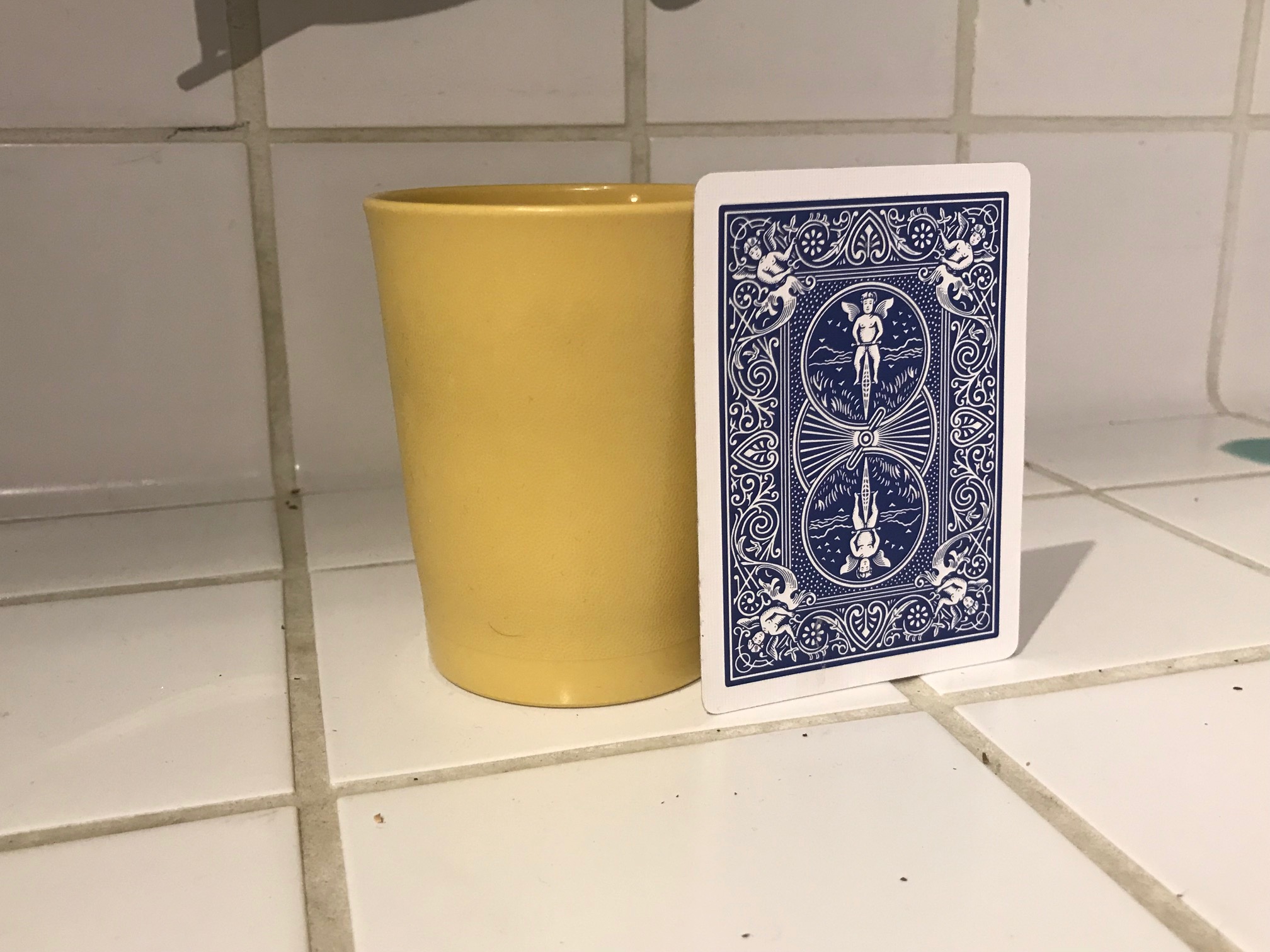
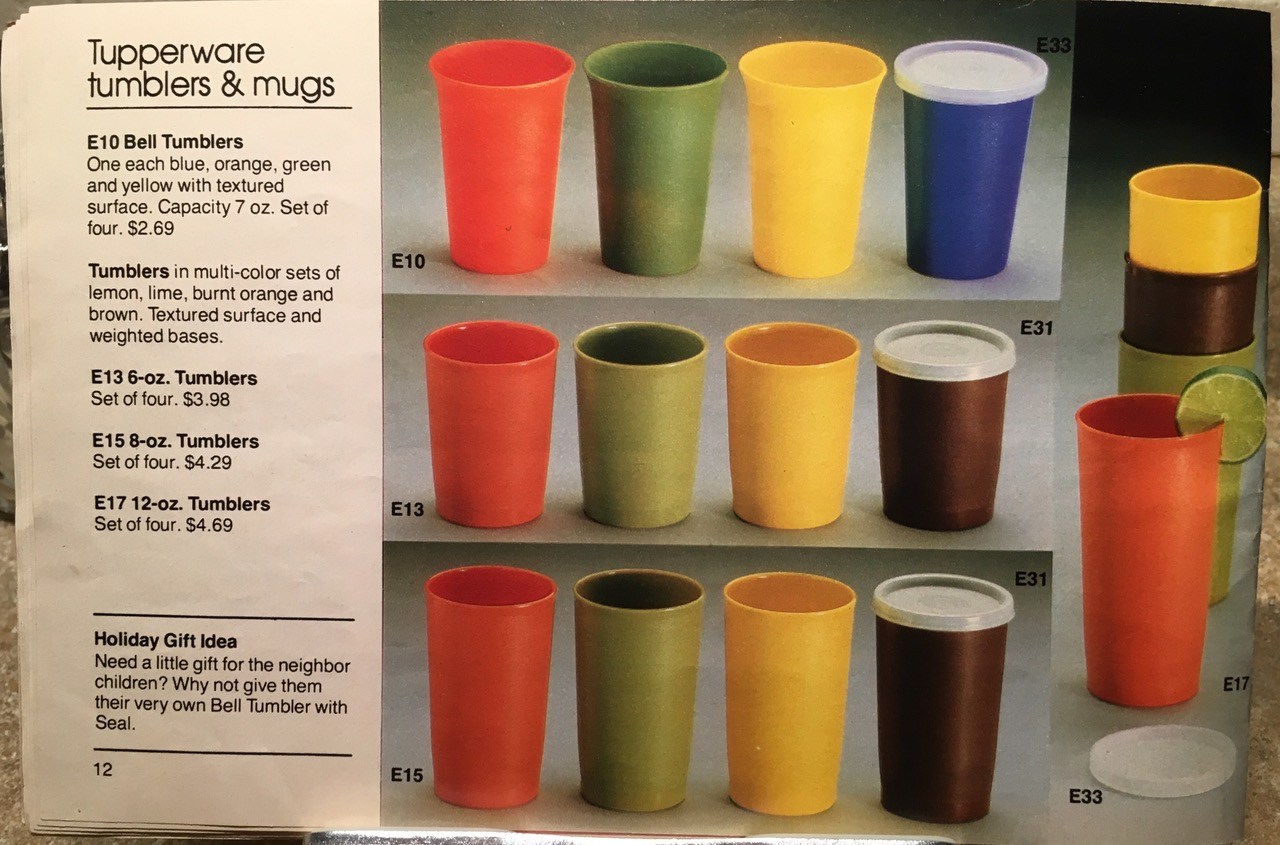
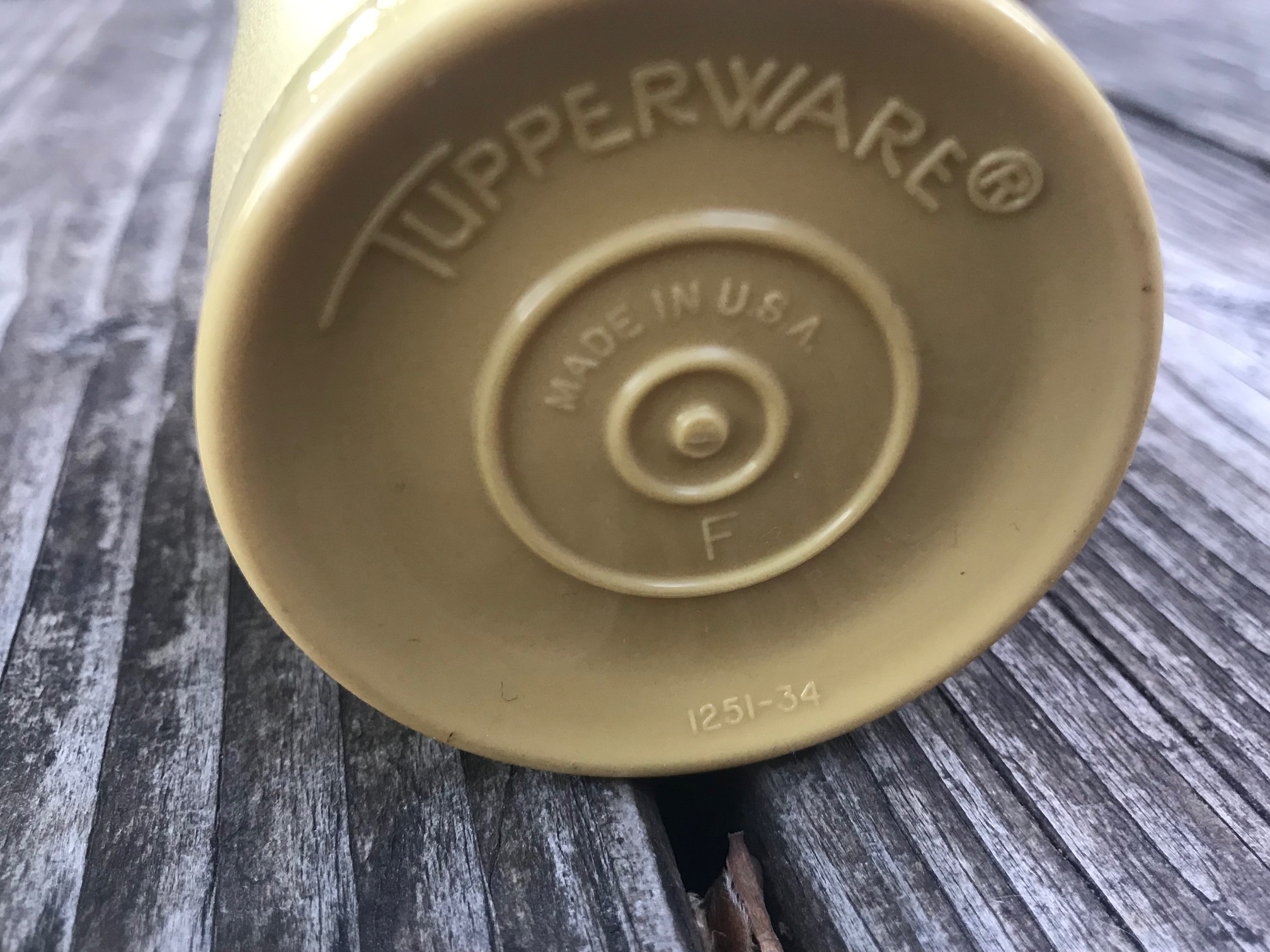
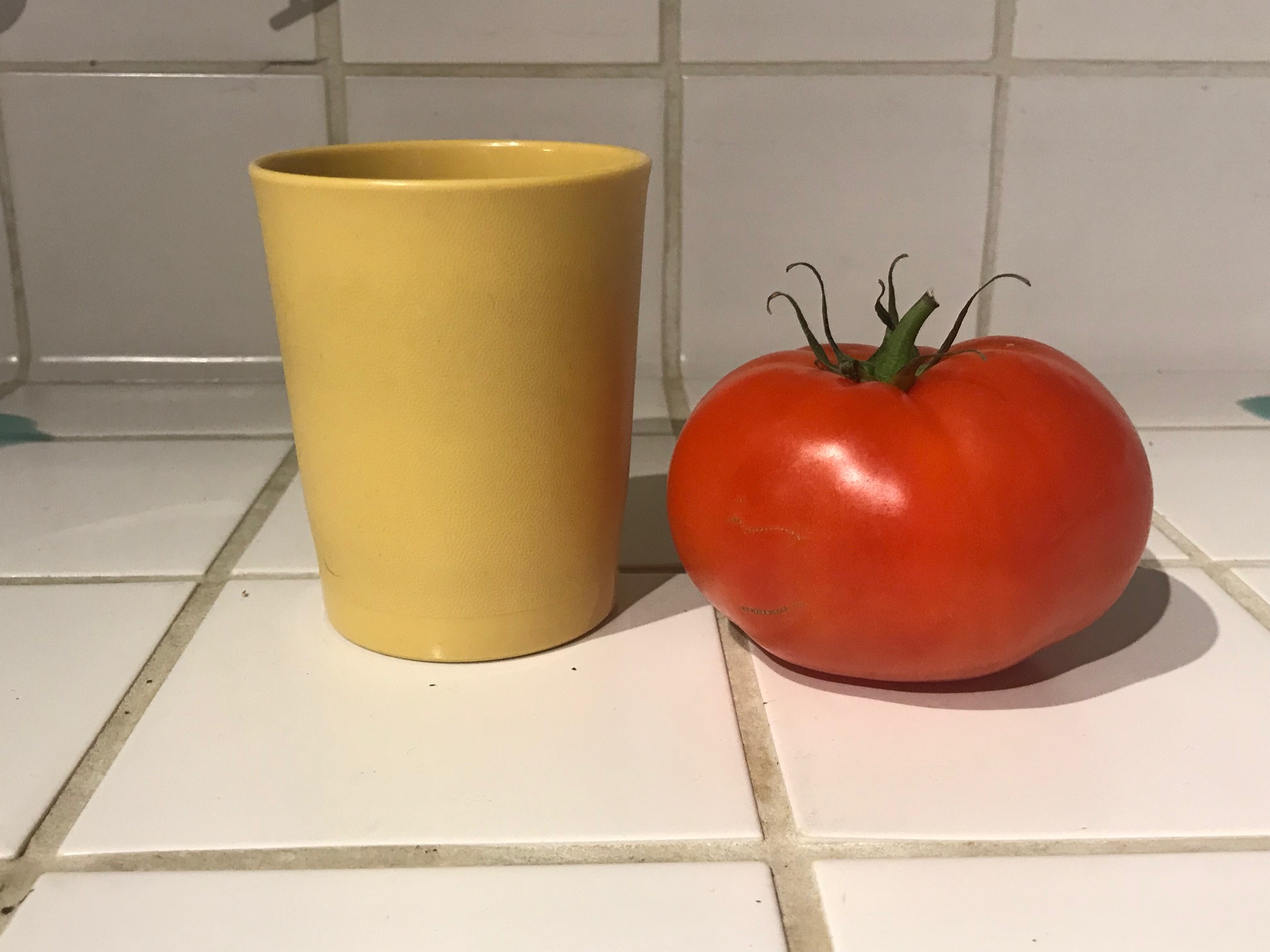
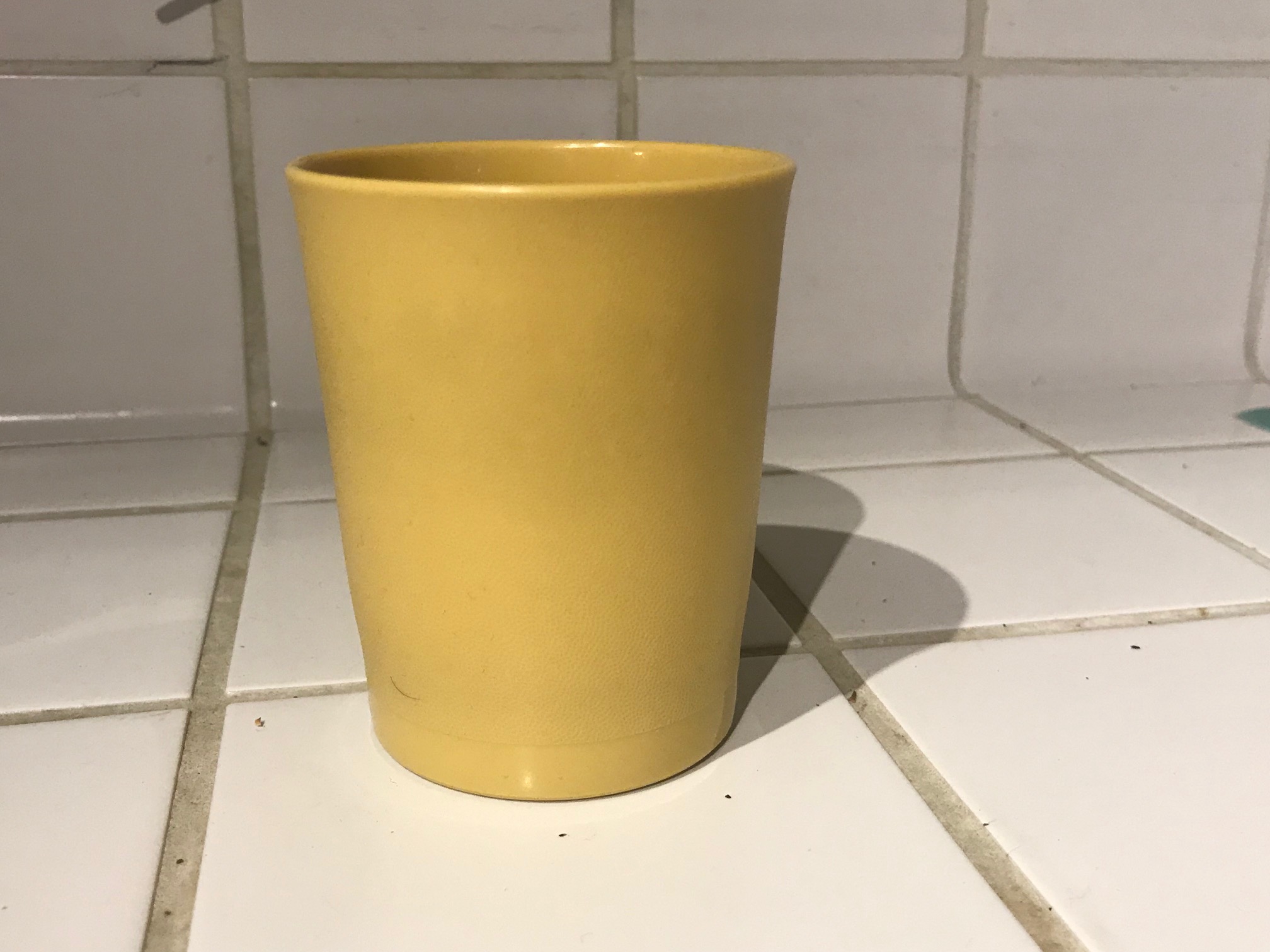

I am new to your blog and appreciate the work you do. I was recently diagnosed with heavy lead and need help. I do not live in an old house with lead paint, my water has been tested and found ok, so I am interested in knowing what dinnerware you have tested and if the glaze could be the culprit since so many are made in China these days. Thanks for your help and insight! I would appreciate any guidance you can give me.
Hi Linda,
There are over 1,700 posts and pages with information on this site. Most of the posts are consumer goods I have tested. Here is the link to the index which might be a good place to start:
https://tamararubin.com/2018/01/a-new-idea-an-index-for-leadsafemama-com/
You might also be interested in this post about the dishes I use in my home: https://tamararubin.com/2016/12/ask-tamara-what-dishes-do-you-use-in-your-home-which-dishes-are-lead-free/
… and this post about safe dishes: https://tamararubin.com/2018/12/asktamara-which-dishes-are-lead-free/
Here’s a good background post: https://tamararubin.com/topics/does-vintage-and-new-functional-pottery-and-dishware-have-unsafe-levels-of-lead/
Tamara
If you heat your water in an electric kettle then have that boiled water tested. It has been found that older kettles have lead based solder which dissolves in the boiling water.
Hi Wendy,
I don’t think there has been any good research on toxicant concerns for electric kettles. As a result I don’t have a solution that I am really excited about in that area. New Electric kettles will likely be safer than anything vintage though – as a general rule.
Tamara
Do you know what year that may have improved? I sold Tupperware around 1985 or 86 and have lots if it. Do you know anything about their Ultra 21 ovenware product?
Hi Doris,
It looks like your best bet is to stick with post-2010.
Tamara
Hello, I am new here and I am glad I read this. I use plastics in my kitchen, mostly Tupperware and I didn’t know this thing about Tupperware. I must say this, you explained this thing very clearly with every reference you had and Anyone can easily understand this thing. I request you to post more articles like this in the future and if you can write about what new Tupperware items are good to use and what items are not, it will be really appreciated. I recently had a Tupperware April flyer 2019 and I bought some products but now I am confused that whether to use them or are they not good to use. See if you can help me with this.
Thank you for this information. I have these same cups in my cupboard. Will be replacing them.
Hi Linda! That’s probably the best course of action right now…especially since Tupperware has refused to make a specific public statement about the products – other than “we always have complied all regulatory standards” – which is irrelevant given there were not regulatory standards for the issue of heavy metals in plastic food-use products at the time these were manufactured.
Tamara
That particular color of tumbler was made @ 1973-4. I bought an ice tea set in that color- large pitcher and 6 tall cups. Thankful that I no longer have or use them!
Thank you so much for commenting, Ginger!
– Tamara
They also had coffee mugs. That particular color is the harvest gold, I believe. There was also burnt orange, avocado green, and a brick red type of color. They also had plates and bowls to match, along with serving bowls, canisters, sugar bowls, and pitchers. I’m sure all of it had just as much lead in it! :-/ In the 90s they came out with the same things, but in pastel colors.
I still have one and can ask my mom later, but it’s 4am right now. We had an avocado colored cup identical to the ‘harvest gold’ beige color in the pictures you show, and then in the color of cup you have, but a taller (doubled?) size. I was a child of the 1980s and not alive before then. Although my mother certainly also went to Tupperware parties in the 1970s.
The first, I accidentally threw away with my uncharacteristically disposable lunch sack one afternoon. My dad had been the genius, there. The tall one, I routinely heated cold water until boiling hot in the microwave in, and steeped my loose leaf tea, sometimes taking hours to drink it. A solid sarcastic thank you for the intense anxiety for Things I Can’t Control By Now as I take a solid crack at trying to reproduce.
Good story! The impacts on reproductive systems are significant – even with trace exposure. Here’s a piece I wrote that you might find interesting (including some of the science on that concern):
https://tamararubin.com/2019/07/today-is-my-youngest-sons-11th-birthday-happy-birthday-charlie-parker-eliezer-rubin-the-story-of-how-lead-impacted-his-birth/
Tamara
This is pretty upsetting from a nostalgia standpoint. I used these cups as a child and recently found two at a thrift store. My children have been using them as teeth brushing rinse cups for years. I will promptly remove them from use but is it okay to have them around for other uses? How does one get the lead poisoning from them? Touching them?
Hands full! Will respond a.s.a.p., but wanted you to know I saw your comment Michelle!
– Tamara
As the parent of a child who suffered from lead paint poisoning. Not from Tupperware products. We lived on the second floor without A/C I’d open the window and he’d breathe in the lead Dust. Only way to get lead paint poisoning is by breathing dust of lead paint or digesting it. Using a cup unless there’s rough edges that are eaten or if children swallow almost impossible.
Also after age 7-8 there’s no I’ll effects from lead paint poisoning the brain of the growing child.
Hi Debi,
I’m sorry to hear about your kiddo. My children were Lead poisoned from inhaling Lead fumes in 2005 and my son has a permanent brain injury as a result. We have some support groups for parents of Lead poisoned children on Facebook. Please let me know if you would like to be added to those.
There are a couple of myths to dispel in your comment here:
1) Lead poisoning can happen at any age. The CDC cutoff of “6 years old” is random (an industry inspired construct) and not a measure that is in any way protective of children’s health. The brain is developing through age 25, and humans can still be significantly poisoned throughout their life.
2) Dishes (including plastic dishes) with Lead have the potential to leach lead into the beverages they contain and can poison the user in that way. This is especially true with older dishes / vintage dishes and / or heavily used deteriorating dishes. This type of ingestion is even more harmful if acidic foods (juice, lemonade – etc.) are used within the vessels in question.
Tamara
Tamara, could you possibly link me to any FB groups for parents of children exposed to lead. Our youngest had exposure and I have not been successful in finding any support groups. Thank you!
What would be the safest way of disposing of them? Thanks!
Good morning Karen!
Here’s my post about that: https://tamararubin.com/2013/11/what-should-i-do-with-my-lead-contaminated-dishes-to-toss-or-not-to-toss/
Have a “Lead Safe” Fourth of July!
Tamara
I’d place in Recycling bin
Thank you for communing Debi!
– I have heard though that these plastics are not actually recyclable… although that is not my area of expertise!
Tamara
I was under the impression that Tupperware has a lifetime guarantee. So, if you have vintage Tupperware shouldn’t you contact them and return it for a replacement?
Hi Maria!
Thank you for commenting. That was my understanding as well. So far they have not publicly responded to the the Lead concerns (and Mercury, and Arsenic, and Cadmium!)
This is the only response I received: https://tamararubin.com/2019/03/march-27-2019-wednesday-152-p-m-i-just-got-a-response-from-tupperware/
Tamara
I have the white 4 piece canister set. I would say the set is about 20 years old. What’s the word on this? Safe or questionable? Should I dispose of them?? Thanks!!
Hi Cathy, thank you for commenting.
I have not tested many examples of the white products. Since I don’t know the year of manufacture I hate to say something is safe based on one or two examples that I have tested, but that said, here is a link to a white item I tested (year unknown) https://tamararubin.com/2019/03/white-tupperware-vintage-measuring-cups-non-detect-for-lead-mercury-cadmium-and-arsenic/
My concern with the white is the same as with anything Tupperware made pre-2010, BPA. BPA is a known endocrine disruptor and has the potential to cause a LOT of health problems – so I definitely think it is something to avoid (my personal opinion, and the opinion of many others educated in the issue as well.) I will try to find a good link for you about the impacts of BPA.
Tamara
I sold Tupperware during this time. I have gotten rid of much but would like to know about the moduler mates. Still using some. Should I not. I am local can provide one for testing.
Hi Penny,
Thank you for commenting. Can you send me a picture of the piece you are referring to? TamaraRubin@mac.com.
Are you local in Portland, Oregon? You could drop it off at my house potentially. Let’s follow up by e-mail. I am out of town for about another week longer but then will be back for a while.
Tamara
Oh i appreciate your info but am upset. I use that pitcher, lettuce keeper, 12oz cups and seals, measuring cups and spoons, pie taker, 3 size bowls with lids should I go on ? We had those parties for years. Where can things be tested?
Hi Beth,
Here’s how to participate in the testing I do. It’s generally not cost effective to have these things tested. My readers collaborate with me to cover the cost of the testing so we can report the results here and keep the information freely available for those who are interested, so if you do participate you are helping others in addition to getting information for yourself: https://tamararubin.com/2017/07/subscribe-in-support-of-my-advocacy-work-you-can-become-eligible-to-send-in-a-box-of-your-things-for-testing/
Tamara
Is it only yellow Tupperware before 2010?
Oh no is old brass lead? My bed is brass.
Hi Beth, I have found toxicants in almost all of the colors of Tupperware that I have tested, but not in every example of every color, so it is really hard to tell. For that reason I think it is a safer bet to get rid of pre-2010 Tupperware since not everyone can afford to have their Tupperware tested (if you took it to a lab it could be hundreds of dollars per item, far exceeding the value of the product.) Here’s a post you might find helpful: https://tamararubin.com/2019/03/asktamara-how-can-i-tell-if-my-vintage-tupperware-plastic-cups-are-toxic-by-color-by-shape-by-age/
Regarding brass: vintage brass (and modern brass for that matter) is often high Lead. Here are some examples: https://tamararubin.com/category/leaded-brass/
That said – some brass (usually a brighter yellow color) is stamped sheet brass (like what a lot of vintage brass beds are made of) and may be Lead-free or low-Lead. For an educated guess on a vintage brass bed I would say that it is possible for the finials (usually heavy brass balls at the ends of the posts) are often Leaded, but the poles and main structure of the bed are less likely to be high-Lead. Again this varies bed to bed and I cannot say for certain without testing your particular bed. If you want to email me a picture I could give you an educated guess however: TamaraRubin@mac.com
Thank you for commenting.
Tamara
How should I dispose of all of these?
Thank you
Hi Beth, heres’a post I have written about that:
https://tamararubin.com/2013/11/what-should-i-do-with-my-lead-contaminated-dishes-to-toss-or-not-to-toss/
I think in this case if my readers collectively made an effort to try to return the products Tupperware might actually respond positively (free replacements, public recall, additional leach testing!) So I would like to encourage that to the degree possible!
Tamara
Thx. And very interesting.
That mustard colour yellow Tupperware was sold by my mom in the 60s & 70s and I remember it well. There were canister sets of the same colour – and much was the ever popular olive green and burnt orange shades also common then.
Hi Trina!
Thank you so much for commenting, especially with information that helps to date the piece! I am sure many of my readers will appreciate that!
Tamara
What about the canister set from that period of time?
Hi Judy, thank you for commenting!
I have only tested one canister so far – a dark blue one with a sort of squiggly floral light blue design stamped on it. That particular one was negative for Lead, Mercury, Cadmium and Arsenic. [I have not yet done a post for that.] From the design of the canister I tested (and the color) I am assuming it is possibly a later piece (1980s or possibly even 1990s) and not representative of the potential findings in some of the older pieces. I will keep my eyes out for an older canister set in my travels, however if you want to participating in the testing I do (and help others in doing so – as the results will be posted here on the blog), here is the link for how to do that: https://tamararubin.com/2017/07/subscribe-in-support-of-my-advocacy-work-you-can-become-eligible-to-send-in-a-box-of-your-things-for-testing/
Thanks again for commenting.
Tamara
This Tupperware cup dates back to the 1960’s. During that time my mother worked as a domestic housekeeper. When the woman she worked for bought more Tupperware, she gave the old set to my mother. The same size and the same color cups. My mother was sick in 1980’s. I had a hair analysis done. It showed a high level of lead and Cadmium and Mercury. She was placed on dialysis.
Wow – thank you for commenting Barbara. What an amazing (and sad) story to share. I have heard many stories like this since originally writing these posts and I really think they (collectively) speak to the need for the company to take some responsibility – and at least do leach testing on their vintage products, potentially followed by a recall and product exchange. Thank you again for sharing.
Tamara
I’ve been using the yellow and green Tupperware sets of measuring cups for years! I know they are pre-2010, but can you update on these particular products please?
I will send a picture to you. Also what kind of container do you recommend to store flour,sugar etc.
The biggest thing that consultants are told, is to not microwave ANY older Tupperware that may have BPA in it. The microwaves/heat are what could POSSIBLY allow small amount of BPA to leak into food. With current Tupperware, only microwave that which states so, or you will have warping. Current Tupperware DOES NOT have BPA in it. Any further questions please contact the worldwide headquarters in Orlando, FL at 1-800-TUPPERWARE.
Thank you for commenting, Julie.
Unfortunately the orange dish (and similar) that I have posted are sold and marketed as safe for microwave use (in spite of the fact they contain heavy metals and BPA.) Here’s the link to my post on one of those pieces: https://tamararubin.com/2019/04/consumers-cant-tell-the-difference-one-of-these-bowls-has-3136-ppm-cadmium-773-ppm-mercury-both-are-poisonous-to-humans-one-is-negative-for-these-toxicants/
Here’s another: https://tamararubin.com/2019/12/another-vintage-tupperware-example-orange-bowl-with-lid-3380-ppm-cadmium-935-ppm-mercury-both-are-poisons-for-humans/
And a third: https://tamararubin.com/2019/03/another-vintage-tupperware-example-orange-bowl-with-lid-3380-ppm-cadmium-935-ppm-mercury-both-are-poisons-for-humans-2/
Tamara
The orange, yellow, and green items are from the 70’s and maybe early 80’s, long before Tupperware was touting microwaveable merchandise. I am not disputing your testing, as I am no “expert”. I am not disputing that people should get rid of their “vintage” Tupperware. Unfortunately, a lot of it does last a long time and can be found in today’s cupboards as hand me downs or thrift store finds. As a consultant, we have never received information about metal contents in older products, only BPA, with into to pass on to consumers. Apparently, BPA was found in most plastics made during those years. If you have reached out to Tupperware for an explanation, I hope that someone that can answer your questions or confirm your test results will reply to you.
Hi Julie,
Thank you for commenting. We did start a petition since they have not responded. They also have not responded to the petition.
Here’s the petition link: https://tamararubin.com/2019/07/please-sign-this-change-org-petition-asking-tupperware-to-merely-respond-officially-regarding-the-findings-of-lead-mercury-cadmium-and-arsenic-in-their-vintage-products/
Tamara
Thanks for the important information. Is the xrf meant to test plastic? Curious to know if you tested a bulk sample or if there is such a test? Is this how CSPC tests for lead in children’s toys or candies? Just curious.
Hi Luana,
The XRF instrument I use is specifically designed to test consumer goods and has an algorithm (as part of the software) for testing plastic accurately. It is the same instrumentation used by the CPSC to test for toxicants in consumer goods intended for use by children. Candies are a food item and are toxic at a much lower level and need to be tested in a laboratory setting (and that is within the realm of the FDA not the CPSC.)
Here’s more information about the testing I do: https://tamararubin.com/2016/12/ask-tamara-what-do-you-use-to-test-for-lead/
Thank you for commenting
Tamara
Clear Tupperware storage containers Circe 1998? Keep or pitch? How can I have them tested?
What about plastic Tupperware canisters?
What is the link to your data, the scientific data for confirming this?
Interested because I have old Tupperware also,
Thanks!
What about the clear modular mates food storage containers?
The thing is, most of these items are only replaced by items made in China. Until we can get manufacturing of kitchen wares back to the States, I refuse to buy made in China.
I’ve had these cups for decades along with many other items featured, and I did have a heavy metals test about 4-5 years ago through Functional Medicine, and I had nothing showing I had poisoning in my system then. I don’t know if five years on would make a difference. And the reason being was not because of fear of a poisoning, but because I had experienced bad side effects from a medication and they were basically trying to check my entire system for anything else.
Lead paint is a whole other matter, though.
Thank you for all you are doing to make awareness of items we use daily. I have started tossing and replacing several vintage Tupperware. I wanted to know if you have tested any of the pastel colored and semi transparent with blue & pink lids, Tupperware from the late 80’s to 90’s. I have read and understand you have posted to not use 2010 and prior, but wondered if you have ever tested these.
Best,
Marianne
With a sad, but grateful heart, I have emptied my drawers of my 40+ year old tupperware cups and bowls. I had them for my children, now my grandchildren, but no more! Thank you for your incredible work. I’m sorry for the heartache that brought you to this important work.
Thank you.
I just have to say I love the cat in this photo—hilarious!